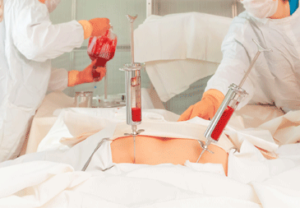Regenerative medicine & tissue engineering : Is it a solution for organ transplantation?
Regenerative medicine helps for regeneration and replacement of a variety of tissues and organs .


The terms regenerative medicine and tissue engineering are used with appreciable overlap by scientists and clinicians and in this review are used as synonyms. The promise of regenerative medicine is founded on the potential and ability to regenerate and replace damaged tissues and organs. Regenerative medicine has shown promising results for the regeneration and replacement of a variety of tissues and organs including skin, heart, kidney, and liver and the potential to even correct some congenital flaws.


Despite differences in national economic powers and therefore differences in healthcare infrastructure, overcoming burdens such as the low supply of organs and the practical hurdles of collecting and storing them can help in increasing the number of people who can undergo organ transplantations. Therefore, strategies and technologies that can increase the supply of tissues and organs for transplantation must be developed further.
In most cases, tissues and organs are required immediately for transplantation as is the case when people are wounded in accidents, wars, and natural disasters. The shortage of tissues and organs not only hampers the treatment of patients but also hinders scientific research. The development of an endless supply of tissues and organs therefore represents the most challenging task of our generation. Many initiatives have been undertaken to increase organ donations and better usage of the donated organs.One solution is the advent of laboratory-grown tissues, humanized animal organs, and bioartificial organs.
Regenerative medicine may help in solving some of these challenges. For regenerative medicine strategies to be successful, the material used, mostly combinations of scaffolds, growth factors, and stem cells, must be able to replace the damaged tissue and be able to function as the original tissue or be able to stimulate regeneration of the original tissue. Cells used in regenerative medicine and tissue engineering can come from the same patient (autologous) or from another individual (allogeneic). In addition, xenogenic cells such as those from animals can also be adopted in regenerative medicine strategies.


Materials and biomimetics of the extracellular matrix have been in use for several years now and do more than just providing the physical structure. Materials and biomimetics can stimulate regeneration on their own but can also be used to present biomolecules such as growth factors to promote the growth of cells. Initially thought to be necessary for physical support for cells, the biomaterial or scaffold can now incorporate biological cues or signals to enhance or promote tissue regeneration and function.
Due to the different regeneration capacities of different tissues, some tissues may not require cells but just the biomaterial and biologics whilst other tissues have limited regeneration capacities and require the biomaterial, biomolecules, and cells for regeneration to occur. Tissues and organs with limited or no regeneration capacity at all include the cartilage and cornea whilst those with high regeneration capacities include the liver and the lungs.


Dr. H. Purushothama MSc., Ph.D.,
Scientist-Regenerative medicine
Email:purushothamalab@gmail.com
Mob:9632175741
About NIKIMA Healthcare Solutions:













